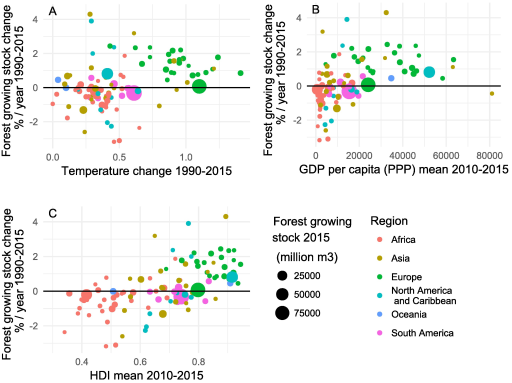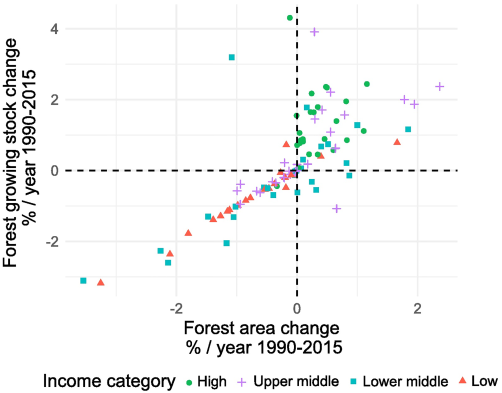研究称森林资源变化率与人类发展水平成正比
来源:《PLoS综合》
作者:Pekka E. Kauppi
时间:2018-06-07


由芬兰研究人员进行的一项新研究发现,森林资源变化率与人类发展水平呈正相关关系。
人类发展指数由联合国开发计划署发布,从预期寿命、教育水平和人均收入三个基础变量入手,衡量各个国家的人类发展水平。
近日发表在美国《科学公共图书馆·综合》杂志上的研究显示,在人类发展指数高的国家,森林蓄积量呈增长趋势;而在人类发展指数较低的非洲地区,森林蓄积量则在减少。
数据显示,1990年到2015年间,高收入国家的森林蓄积量每年增长1.31%,中等收入国家的森林储蓄量增加了0.5%。相比之下,27个中低收入国家的森林储蓄量平均每年下降了0.29%;而在22个低收入国家,这一数字则下降了0.72%。
研究人员认为,上述现象的原因在于,高收入国家在较为优质的土地上采用更为先进的农耕方式,放弃耕作一些质量较差的土地,而这些土地使森林扩张成为可能。此外,较富裕的国家还向森林管理、自然保护等可持续发展项目投入更多的资源,而低收入国家在管理开发土地和森林方面的科技能力十分有限。
研究人员表示,该研究结果对于未来预测陆地碳汇具有重要意义。碳汇是指森林、湖泊、草原等从空气中清除并储存二氧化碳的能力。
研究报告的第一作者、赫尔辛基大学教授佩卡·考皮通过电子邮件对新华社记者表示:“改善人的生活将会有助于提高全球森林的生态效益。”(来源:新华网 王子辰)
Forest resources of nations in relation to human well-being
Abstract A universal turnaround has been detected in many countries of the World from shrinking to expanding forests. The forest area of western Europe expanded already in the 19th century. Such early trends of forest resources cannot be associated with the rapid rise of atmospheric carbon dioxide nor with the anthropogenic climate change, which have taken place since the mid 20th century. Modern, most recent spatial patterns of forest expansions and contractions do not correlate with the geography of climate trends nor with dry versus moist areas. Instead, the forest resources trends of nations correlate positively with UNDP Human Development Index. This indicates that forest resources of nations have improved along with progress in human well-being. Highly developed countries apply modern agricultural methods on good farmlands and abandon marginal lands, which become available for forest expansion. Developed countries invest in sustainable programs of forest management and nature protection. Our findings are significant for predicting the future of the terrestrial carbon sink. They suggest that the large sink of carbon recently observed in forests of the World will persist, if the well-being of people continues to improve. However, despite the positive trends in domestic forests, developed nations increasingly outsource their biomass needs abroad through international trade, and all nations rely on unsustainable energy use and wasteful patterns of material consumption.
原文链接:http://journals.plos.org/plosone/article/file?id=10.1371/journal.pone.0196248&type=printable




